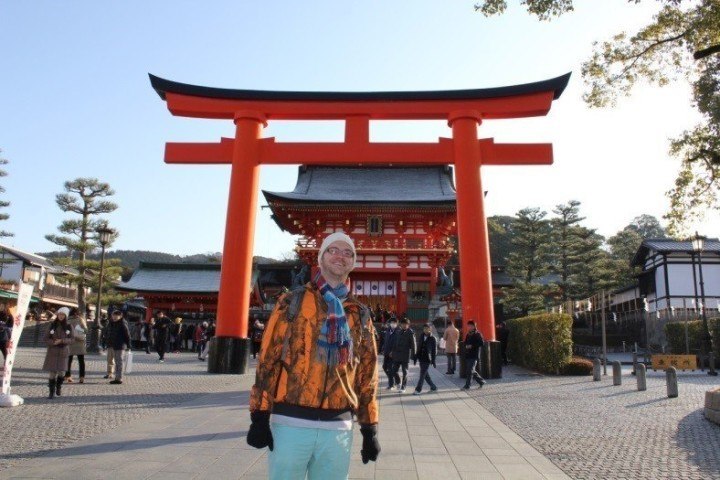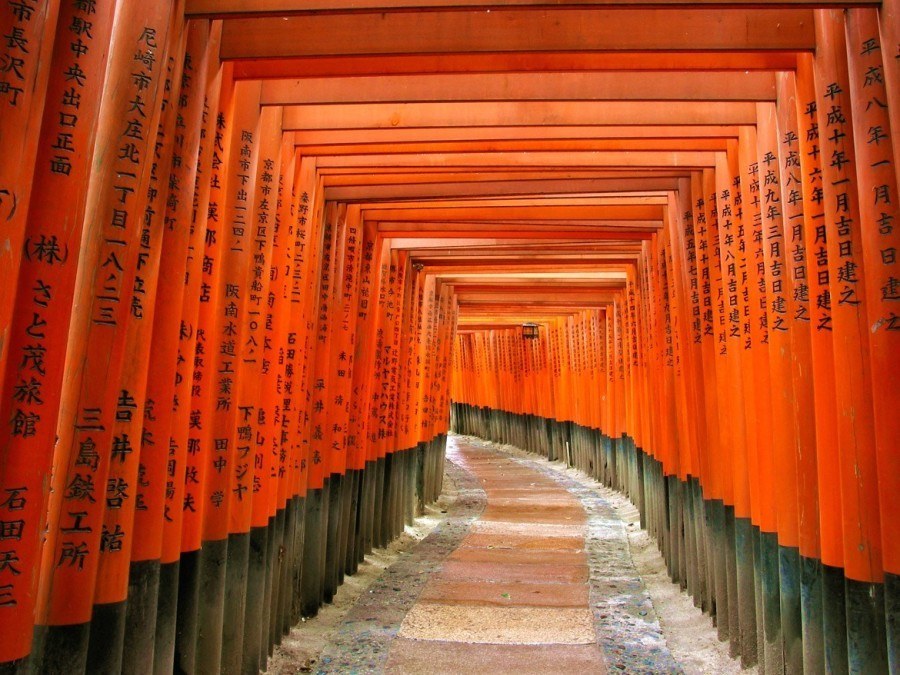Like this post? Help us by sharing it!
Takeshi Suzuki is a full-time guide for Inside Japan Tours, showing our customers around Kyoto, Osaka, and the other fascinating sights of the Kansai/Kinki region. Recently, Suzuki-san teamed up with our Kyoto-based tour leader Richard for three days walking the Kyoto Trail. This is the first of three blog posts recounting how they fared…
Richard and I met at the Keihan Fushimi-Inari Station in late January to begin walking part of the Kyoto Trail – a network of walking routes that criss-cross the Kyoto countryside.

The Kyoto Trail consists of two main courses: one runs for about 70 kilometres along the mountainsides that surround Kyoto City; the other is a 40-kilometre route traversing the Keihoku area of the prefecture. The trails fan out from the city to connect some of the most beautiful parts of Kyoto Prefecture, such as Mount Hiei, Ohara, Nishigamo, Arashiyama, Takao and Kiyotaki – running through stunning rural scenery and cedar forests, and past clear streams and historical temples.
It’s a fantastic way to get a feel for the history and culture of Japan’s ancient capital – not to mention to see a side of the region rarely seen by outsiders. We set off on our walk ready to experience a very different kind of Kyoto.
According to TripAdvisor, Fushimi Inari Shrine, whose ten thousand red gates adorn many a guidebook and travel blog, was the most popular tourist destination in Japan both in 2014 and 2015. In the first three days of January this year, it is reported that over 2.7 million people visited the shrine, making it the third most popular destination for the Japanese tradition of hatsumode (the first shrine visit of the New Year) after Meiji Shrine in Tokyo (3.2 million) and Kawasaki Shrine in Kawasaki (3 million). In short – it’s a very important place, and provided an impressive starting point for our hike.
Fushimi Inari is located on a mountain at the edge of Kyoto, and its walking trail – marked by thousands of red torii gates – leads visitors to the top of Mount Inariyama. Though the mountain trail is approximately 4km long in total, the majority of visitors don’t make it to the top, choosing instead to return to the station after visiting the Okusha (inner sanctuary) and Omokaruishi (fortune-telling stones).

Of course, we continued our walk beyond this point and made it up to Inari Yotsutsuji, stopping here to admire the amazing views over the region before continuing to the summit. It’s about a 30-minute walk from the base of the mountain to Yotsutsuji, then a further 15 minutes to the top of the mountain. It may not sound like much, but it’s all uphill so it’s pretty challenging if you’re not in shape! But if you can manage it, it’s a lovely walk and I highly recommend taking the time to do the full course. Walking through so many torii gates in the trees, passing little shrines in the mountain, can be a thoroughly memorable – perhaps even spiritual – experience.

After visiting the top of the mountain and returning to the Yotsutsuji crossroad, we continued along the Kyoto Trail. All we had to do was locate one of the numbered trail boards (like the one you see below) and follow them in order to embark on our adventure.

One of the first stops on our hike was Sennyuji Temple (trail board #7), about 15 minutes from Yotsutusji. Sennyuji is the headquarters of one of the branches of Shingon Buddhism, and was the burial ground for Japanese emperors from 1680 until 1867 – so it’s a pretty important location for the Japanese. The temple has several different buildings, including Shariden, reputed to house some of the Buddha’s ashes; Gozasho, the rest house of the Royal Family; and Tsukinowa-misagi, the Imperial Cemetery – an unexpectedly small, modest affair despite its illustrious inmates.


After visiting Sennyuji, we continued along the Kyoto Trail. We walked through some residential areas of Higashiyama and reached Tsurugi Jinja Shrine (Trail Board #9-1). Here we left the Kyoto Trail and walked to the Imakumano bus stop to catch the bus to Keage, where we’d planned to join a different trail – which I’ll tell you all about in my next blog piece.
Though we didn’t pay it a visit this time, the other must-see destination on this trail is Tofukuji Temple – one of the five main Zen temples of Kyoto and the headquarters of the Rinzai Sect of Buddhism. Combine this with a walk to Fushimi Inari and Sennyuji Temple for a lovely half-day trip from Kyoto, giving you a brief break from the crowds of the city’s famous sites.
Keep an eye out for more posts about hiking in Kyoto Prefecture from Suzuki-san!


